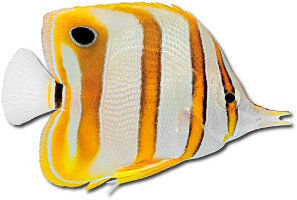Sealife guideThe green moray eelGymnothorax funebris
Last updated on 07/29/2025 at 10:02 PM
The green moray eel is one of the most recognizable species of moray eels, thanks to its distinctive greenish coloration and one of the most iconic inhabitants of the coral reefs in the western Atlantic ocean.
Taxonomy
- Common name: Green moray eel
- French name: Murène verte
- Spanish name: Morena verde
- Scientific name: Gymnothorax funebris (Ranzani, 1839)
- Family name: Muraenidae
- Order name: Anguilliformes
- Class name: Actinopterygii
Description
The green moray eel has a characteristic green color that comes from a yellow mucus secreted by its skin, which mixes with the bluish hue of the underlying skin.
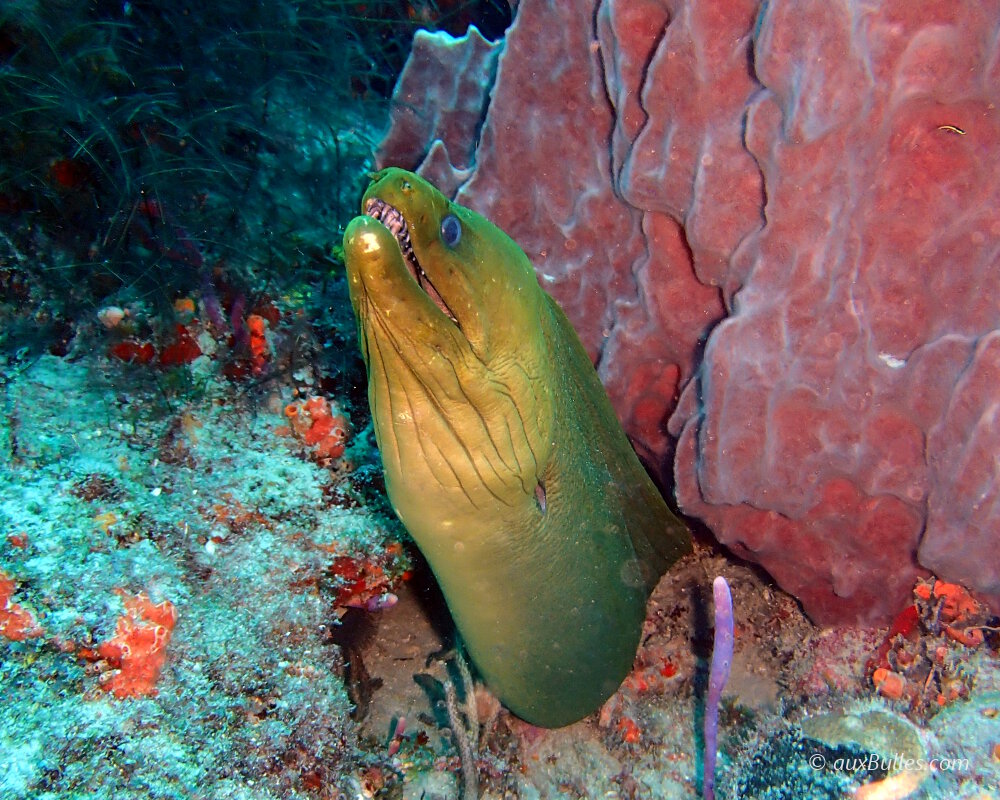
The green moray eel (Gymnothorax funebris)
The body of the green moray eel is elongated like that of a snake and lacks both pelvic and pectoral fins. As adults, they typically measure around 4 to 5 feet in length, but some individuals can reach over 8 feet long.
Geographic range
The green moray eel inhabits the tropical and subtropical waters of the western Atlantic ocean, ranging from the coasts of North Carolina down to Brazil, including the Caribbean and the Gulf of Mexico.
Habitat
The green moray eel is a benthic species found in coral reefs, lagoons, shipwrecks and underwater rock crevices at depths of up to about 165 feet. It is mostly active at night, although it may partially emerge from its shelter during the day.
Highly territorial, the green moray eel often returns to the same shelter for extended periods. It sometimes coexists with cleaner shrimp, such as the
banded cleaner shrimp (
Stenopus hispidus), which remove parasites from its skin and mouth.
Diet
The green moray eel feeds primarily on fish,
cephalopods and
crustaceans. It can actively hunt or lie in wait to ambush its prey. It has a dual-jaw system: a fixed primary jaw and a second, mobile pharyngeal jaw that allows it to grasp and swallow prey with remarkable efficiency.
Reproduction
The green moray eel is an
oviparous species, with external fertilization. The eggs hatch into planktonic larvae that drift in the ocean for several months before undergoing metamorphosis.
Did you know ?
The green moray eel is listed as many other marine species within The
IUCN Red List of threatened species. The green moray eel appears in the
IUCN Red List since 2015 within the category Least Concern !
Tips for observing
Despite their bad reputation, green moray eel attacks are rare. However, it’s important to keep your distance and avoid touching them, as green morays can deliver serious bites with its sharp teeth.
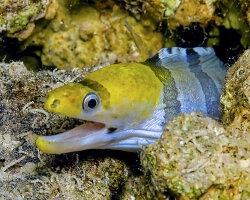
Banded moray
(Gymnothorax rueppelliae)
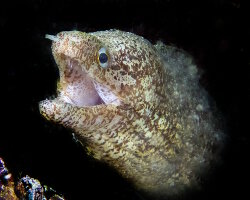
Barred-fin moray eel
(Gymnothorax zonipectis)
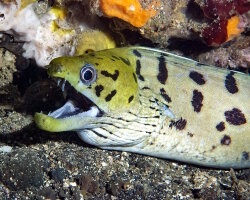
Fimbriated moray
(Gymnothorax fimbriatus)
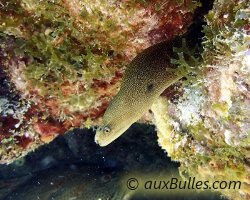
Goldentail moray
(Gymnothorax miliaris)
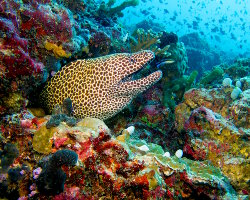
Laced moray eel
(Gymnothorax favagineus)
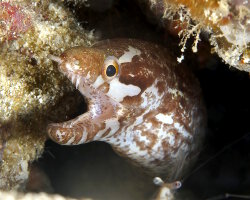
Lipspot moray
(Gymnothorax chilospilus)
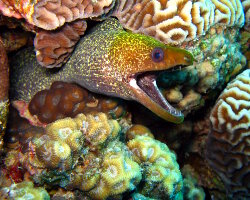
Undulated moray
(Gymnothorax undulatus)
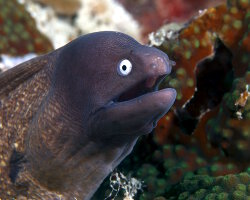
White eyed moray
(Gymnothorax thyrsoideus)
Within the same family
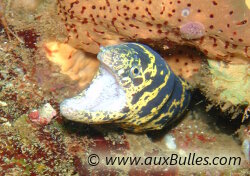
Chain moray
(Echidna catenata)
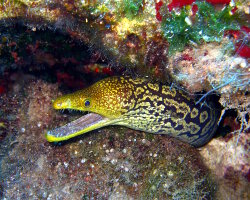
Fangtooth moray
(Enchelycore anatina)
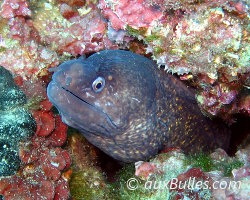
Mediterranean moray eel
(Muraena helena)
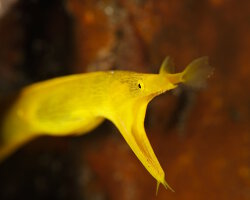
Ribbon eel
(Rhinomuraena quaesita)
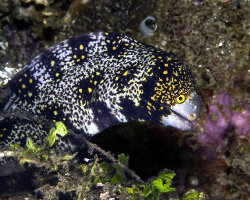
Snowflake moray
(Echidna nebulosa)
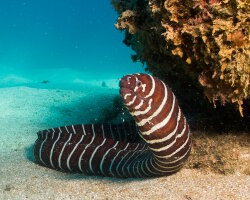
Zebra moray
(Gymnomuraena zebra)
Discover also
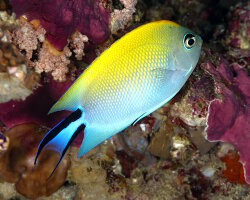
Black-spot angelfish
(Genicanthus melanospilos)
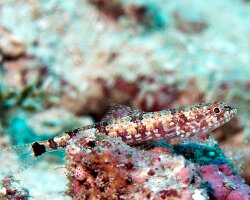
Blackblotch lizardfish
(Synodus jaculum)
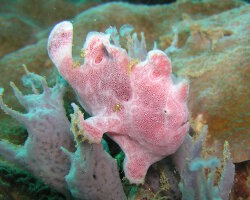
Ocellated frogfish
(Fowlerichthys ocellatus)
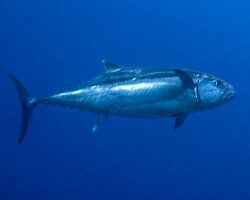
Skipjack tuna
(Katsuwonus pelamis)
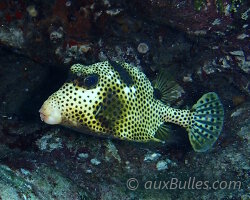
Spotted trunkfish
(Lactophrys bicaudalis)
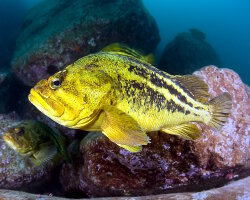
Yellow three-stripe rock-fish
(Sebastes trivittatus)
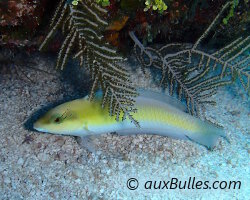
Yellowhead wrasse
(Halichoeres garnoti)
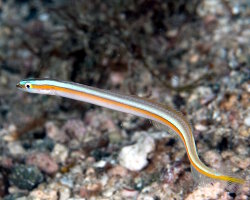
Yellowstripe wormfish
(Gunnellichthys viridescens)
The marine species from Caribbean sea
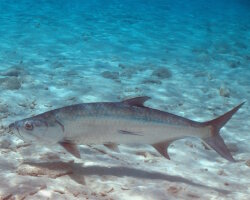
Atlantic tarpon
(Megalops atlanticus)
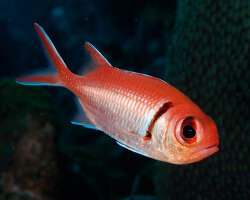
Blackbar soldierfish
(Myripristis jacobus)

Chocolate chip sea cucumber
(Isostichopus badionotus)
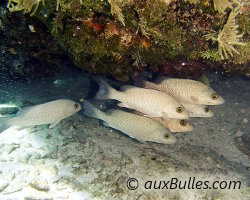
Gray snapper
(Lutjanus griseus)
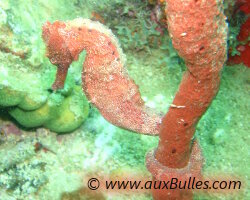
Longsnout seahorse
(Hippocampus reidi)
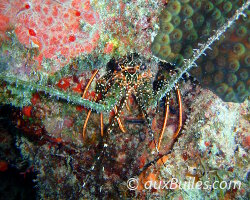
Spotted spiny lobster
(Panulirus guttatus)

Yellow tube sponge
(Aplysina fistularis)
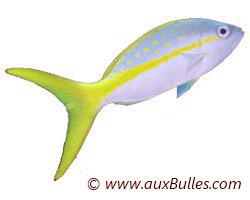
Yellowtail snapper
(Ocyurus chrysurus)
Dive centers

'Les Ilets' dive center

Noa dive center






































